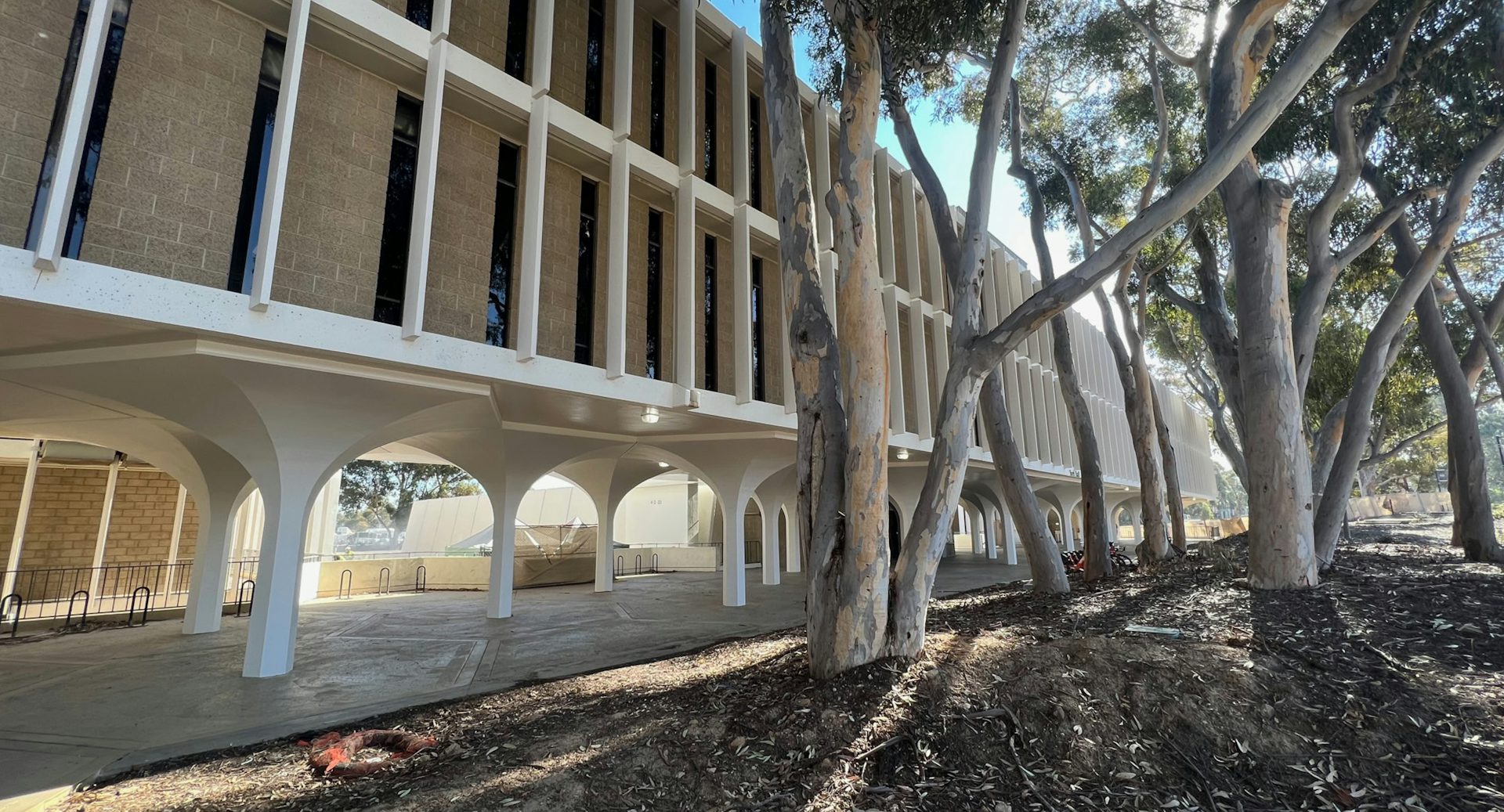Structural Engineers Association of San Diego (SEAOSD) honored the seismic retrofit of UCSD’s York Hall
LPA’s seismic renovation of a historic building complex at the University of California San Diego (UCSD) recently earned an Excellence in Structural Engineering (EISE) award from the Structural Engineers Association of San Diego (SEAOSD). The LPA team accepted the award at the annual EISE Gala, which was held at the newly renovated Museum of Contemporary Art San Diego in La Jolla. (LPA served as executive architect on the museum expansion.)
LPA’s integrated structural and architectural team brought York Hall up to UC’s seismic performance standard while preserving the historically significant architecture. The retrofit included the replacement of multiple fan-vaulted concrete columns and uniquely detailed repairs to the concrete fins that ring the perimeter of three of the four buildings. The team’s targeted approach resulted in cost savings of $3 million for the university and served as a model for future UCSD seismic retrofits.
"The structural retrofit of this prominent mid-century building exemplifies excellence with its seamless execution and exceptional handling of unique and challenging structural elements,” the EISE awards judges said. “From preserving the building's historic architectural integrity to navigating complex structural modifications, the team's commitment to delivering an excellent result shows.”
York Hall, built in 1966, comprises four buildings and serves as the main undergraduate biology and chemistry facility on campus. The 122,000 square-foot complex, with its distinctive 300-foot long column arcade features 800 precast concrete fins, which had been slowly deteriorating in the salt air and direct sunlight for over 50 years.
The structural retrofit of this prominent mid-century building exemplifies excellence with its seamless execution and exceptional handling of unique and challenging structural elements.
“The seismic rehabilitation of York Hall is an excellent example of the challenges faced by seismic engineers in California as an aging building stock is modernized to prolong its functional life,” said LPA Director of Structural Engineering Bryan Seamer. “Integrated design was critical to its success, resulting in designs that comply with modern seismic standards while preserving critical pieces of social and community heritage.”
Designers took a “doing more with less” approach to the project by specifying surgical modifications to the buildings. After careful analysis, only four of the fan-vaulted columns were determined to need replacement. Builders used fiberglass formwork inspired by boat hull design to perfectly replicate the original columns’ unique geometry while adding rebar to address seismic deficiencies. The fins, which weigh 500 lbs. each, were individually evaluated for corrosion; designers then developed a series of repair strategies and used a specialized software application to guide contractors to the specific needed repairs in the field, which saved time and reduced the chance for mistakes.


















